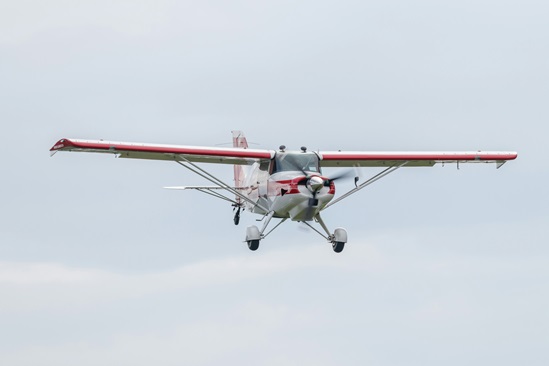 Shooting approaches at Brown Field Municipal Airport (SDM) in San Diego, California, just north of the Mexican border, might include interesting liaisons: “Two-Tango-Alpha, traffic nine o’clock, same altitude, one mile, northbound. Identify type and color, no radio contact.” Might that Cessna 172 be smuggling drugs?
Shooting approaches at Brown Field Municipal Airport (SDM) in San Diego, California, just north of the Mexican border, might include interesting liaisons: “Two-Tango-Alpha, traffic nine o’clock, same altitude, one mile, northbound. Identify type and color, no radio contact.” Might that Cessna 172 be smuggling drugs?
Drugs can board small airplanes in other, equally disturbing ways. In July 2013, Oklahoma’s News 9 reported fatal aviation accidents involving pilots using undeclared or illegal medications, including marijuana, cocaine, and amphetamines—as well as mundane, over-the-counter (OTC) pharmaceuticals such as diphenhydramine, commonly included in cold medications such as Benadryl, Advil PM, and Robitussin Nighttime and Cold. Everyone understands that drug abuse impacts the psyche; alters perception, judgment, and behavior; diminishes reaction times; and impairs coordination.
Many OTC medications may not be safe when flying. Diphenhydramine and other ingredients cause drowsiness—beware products promising improved sleep or reduced secretions; you might end up sleeping permanently, never worrying about secretions again. Frankly, with colds or flu, you should not be flying anyway; pressure changes can seriously damage your eardrums, and viral illnesses impair judgment and performance.
If you have used diphenhydramine to control symptoms of allergies, colds, flu, or as a sleep aid, be aware that it has a variable but fairly long half-life, ranging from eight to 17 hours. The FAA states that flying is prohibited for five times the half-life of the drug after using any medication that may adversely affect flying. For diphenhydramine this could be 85 hours—nearly four days! Keep this in mind when medicating for a virus, allergies, or insomnia, because you are a hazard to safe aviation when the drug is still in you. Additionally, if your sleep is disturbed, consider being evaluated for sleep apnea, something the FAA is becoming increasingly concerned about.
There are safe drugs to take to address allergies, and you should check the AOPA online database (www.aopa.org/members/databases/medical/) and the FAA’s brochure on flying and medications (www.faa.gov/). In fact, before a doctor prescribes any new medication for your use, check these sites or speak with your AME; remember, you have to report all interactions with doctors at your physical, and that is not the time to discover you have been taking a nonapproved drug.
An oft-voiced complaint is why the FAA does not allow certain newer medications, despite the fact that they have been approved for human use by the FDA. Simply put, to obtain market release, pharmaceutical companies have to jump through a number of regulatory hoops, and impact on the ability to control an aircraft is not one of them. That’s why the FAA likes some time to elapse from initial use to ensure that no unexpected side effects, which might compromise safe flight, are rearing their ugly heads. If a newly released medicine is recommended to you, talk to your AME and check with AOPA Pilot Protection Services for advice.
Selective Serotonin Reuptake Inhibitors (SSRIs) are primarily used for mild to moderate depression and in 2010, four were approved by the FAA for pilot use (fluoxetine or Prozac, citalopram or Celexa, escitalopram or Lexapro, and sertraline or Zoloft).
Another area of concern is medications for chronic pain. Previously, doctors used only pain relievers—analgesics—although new drugs developed to treat a range of disorders are being utilized, including amitriptyline and gabapentin. Neither of these medications has an adverse-effect profile safe enough to consider for use in aviation. If chronic pain is sadly in your life, explore options with a pain specialist.
With medications for erectile dysfunction—Viagra (sildenafil), Levitra (vardenafil), and Cialis (tadalafil)—airmen should refrain from flight for six hours after Viagra and 36 hours after the other drugs. Consider evaluating what is causing this condition, as it might presage underlying cardiovascular disease or diabetes.
Unlike that errant Cessna 172, do not cross the border between safe and unsafe flight, and treat drugs with the respect they are due.
My thanks to Dr. Courtney D. Scott, manager of the FAA’s Aerospace Medical Certification Division, for his help with this article and all he does for general aviation.
Email [email protected]



